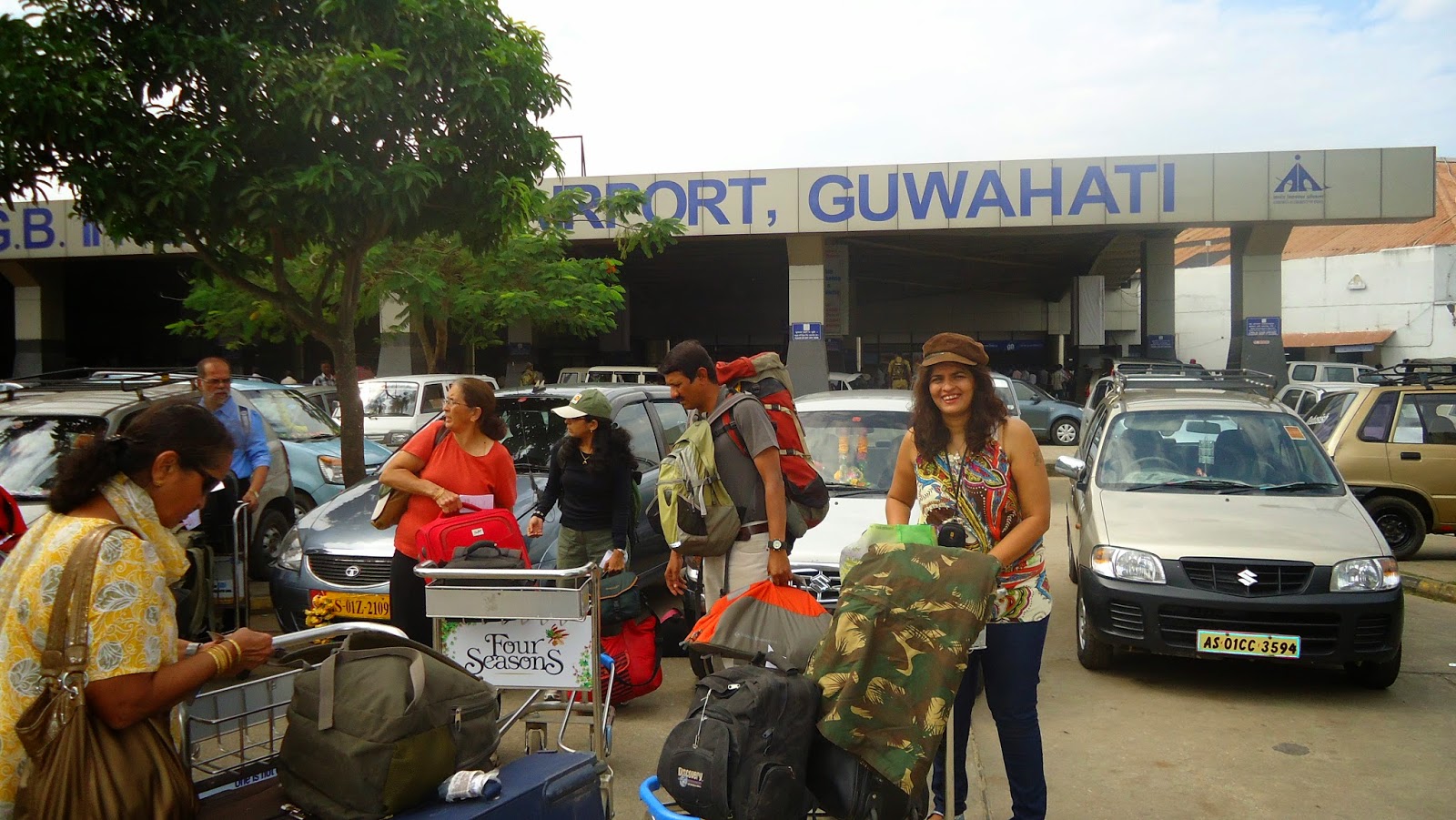*The Inner Child at Champaranya
in Chhattisgarh -the birthplace of the Saint Mahaprabhu Vallabhacharya,
We landed at Raipur airport and had few hours to spare. Sleepy Shobha preferred a relaxed sight seeing trip within the city, yet Sunny Shobha wanted to see more places if possible. We were advised by the Chhattisgarh tourism official to visit a place that was considered very sacred by the Vallabh sect of Gujrathi pilgrims…we decided to visit Champaranya -the birthplace of the Saint Mahaprabhu Vallabhacharya! He was a visionary, extremely learned in the Vedas and Upanishads who established and preached the Pushti way of life in an era of budding religious beliefs. We hired a taxi and Sleepy Shobha got a little wary as she realized that we were almost alone on the highway with miles and miles of bare dry land around us. Chattisgarh seemed very barren and flat as we had earlier noticed from the window seat of our plane as we flew over this newly formed sate.
This pilgrim place
Champaranya at Chattisgarh is different from the Champaran in Bihar that we
learnt about in our History textbooks. We entered a colourfully decorated
place, mistaking it to be the temple when actually it was a dharamshala or a rest
house for the pilgrims. Sunny Shobha decided to visit the tourist office for
some more information about this small place and walked in the hot sun to reach
the actual temple of Saint Vallabharcharya at Champaranya at Chattisgarh
The simple nature of the
locals and the low cost of everything surprised us. When we pay Rs.30 for a
coconut in Mumbai…we were surprised to get a coconut with other pooja items for
only Rs. 10.
A very colourful and artistically creative temple has been constructed in honour of this Saint. The walk through the long decorated entrance lobby made us present to the magic in the air and the positive energy of the place.
A very colourful and artistically creative temple has been constructed in honour of this Saint. The walk through the long decorated entrance lobby made us present to the magic in the air and the positive energy of the place.
There are two temples
dedicated to Shri Mahaprabhu Vallabhacharyaji in Champaran. The first one is
known as Prakatya Baithakji Mandir, and the second is the Chhatti Baithak. One
of them is located at his birth place under the tree and the other one is at
the Ghati pujan place. Many pilgrims were patiently waiting for the doors to
open and to witness the sevais performed by temple officials. Sleepy
Shobha was irritated to wait from 10.30a.m. to almost 11.15a.m. and nobody
seemed to know when exactly the doors would open. She just walked away from the
uncertain temple officials and sat back in the car. Then Sunny Shobha realized that
this was Gods way of asking us to slow down in life, to be calm and immerse ourselves
in the simplicity of the place. Sunny Shobha asked the driver to make a u-turn,
we came back to the temple and prayed fervently in front of the still closed
doors.
When we got a darshan of the baithak of the Saint Vallabhacharya- ( the holy place where he used to sit and meditate) we thought it was worth the wait.
When we got a darshan of the baithak of the Saint Vallabhacharya- ( the holy place where he used to sit and meditate) we thought it was worth the wait.
Apart from this there was
a museum with bright colourful images depicting the story of the great saint. A
small stream of Mahanadi river flowed near the temple.
And we also got to visit the temple of Champakeshwara Mahadeva. Legend has it that a particular cow called Radha was discovered pouring a continuous stream of milk on to a rock shaped like a unique Shivalinga that had Mahadev, Parvati and Ganesh on it.
And we also got to visit the temple of Champakeshwara Mahadeva. Legend has it that a particular cow called Radha was discovered pouring a continuous stream of milk on to a rock shaped like a unique Shivalinga that had Mahadev, Parvati and Ganesh on it.
Sunny Shobha was ready to submit
to the simplicity, calmness and the holiness of this pilgrim place.We imagined
the many miracles of the Saint Vallabhacharya and the huge devotion of the
Gujarathis and we considered ourselves to be blessed to be able to visit this
sacred site at Chattisgarh.
And then we are exposed to circumstances and experiences. Depending on the way we react to our situations, a new inner child emerges. One that we create - cold and sad, pessimistic, capable of being indifferent or hating others, believing oneself to be trapped within ordinary limits, filled with a kind of inner darkness and negative energy, lazily whining, not taking action, I will call that your Sleepy inner child.
You have a choice on which inner child you want to encourage in your life - your Sunny inner child or your Sleepy inner child
I will call my inner child as Sunny Shobha and Sleepy Shobha. Together we will travel around the world)




























































